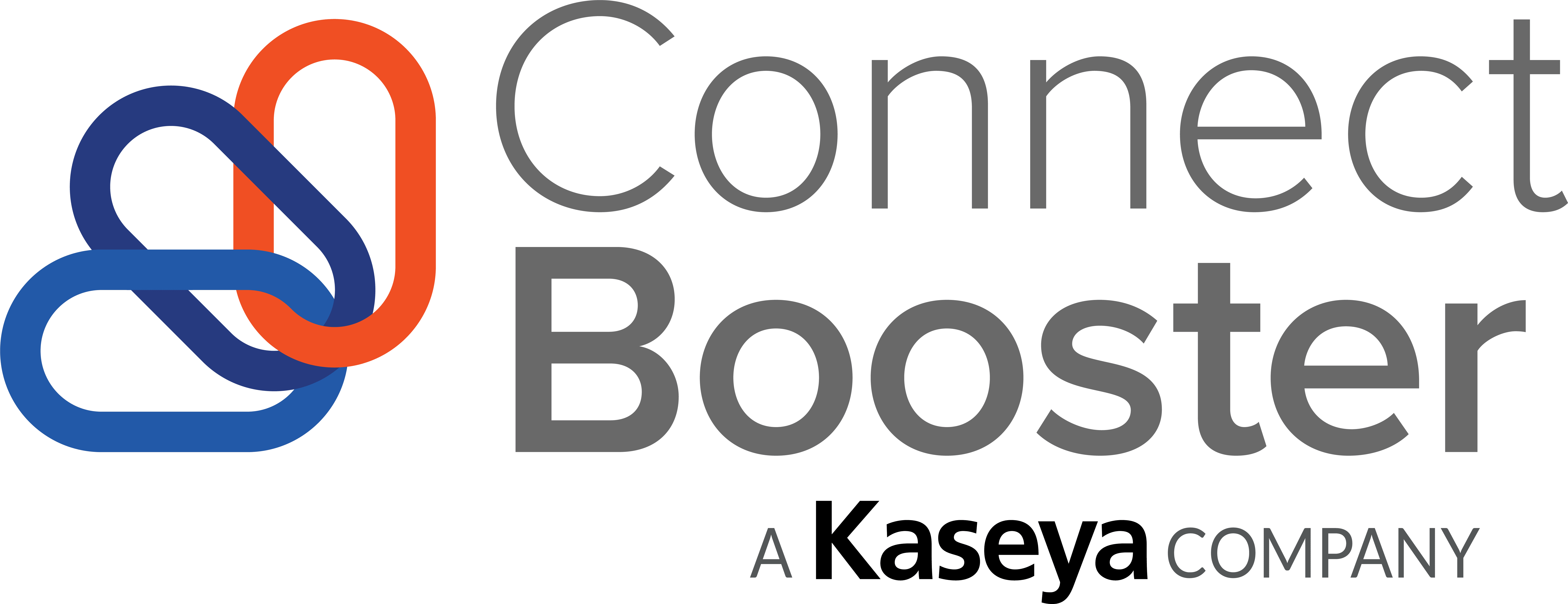Unless you have a passion for math or accounting, metrics are rarely an exciting point of any discussion. However, for MSPs, or any business owner, channel or not, some of those numbers hold tremendous value and should be monitored closely and analyzed frequently.
Key Performance Indicators (KPIs) help managed services business leaders measure and track their operations and provide the insight needed to navigate through the tough decisions. Those metric capabilities may be more crucial for an MSP than ever before in the midst of a global pandemic.
Metrics are essential for your business
KPIs, when appropriately evaluated, help MSPs develop more effective long-term plans, identify impending issues that could cause a potential threat to their businesses, and evaluate their options for automation and integrations. With so many unknowns in the current economic environment, each metric provides context and a foundation that any MSP or channel entrepreneur needs to make rational decisions.
Which MSP KPIs do providers put their faith in when it comes to running their businesses? The list of metrics is long and seems to vary based on company size, capitalization level, and the expertise of its ownership team. Despite those variables, tracking and benchmarking your MSP operations against industry-specific channel KPIs helps ensure your team and company can meet industry and personal standards.
The Top 15 MSP KPIs
1. Agreement Profitability or Managed Services Contract Profitability can be a difficult to track but incredibly important metric for assessing the potential success (or failure) of an MSP or other channel-related operation. Taylor Business Group suggests these agreements should generate at least a 65% gross margin or the prices of your services are too low, the staff is underperforming, or your processes are inefficient. Integrations and automation tools can help MSPs lower support costs and elevate these margins.
2. All-In Seat Price (AISP) helps MSPs determine the total expense associated with every end-user those businesses support. Calculate this KPI, championed by TruMethods, by dividing monthly recurring revenue by the number of seats your firm supports. This channel metric provides you a baseline for evaluating client pricing options and helps ensure profitability for your MSP business.
3. Churn Rate (Clients) What percentage of clients does your MSP business lose every year? That metric includes customers you fire or mutually agree to part ways with, as well as those who choose not to renew contracts or simply stop paying. A commonly accepted KPI for channel businesses to calculate, a retention rate of 90% or higher is desired, which means a client churn rate of 10% or less (customers lost subtracted from those that the company retains, expressed as a percentage).
4. Client Contribution (CC) calculates the income derived from each customer after deducting expenses. This KPI includes revenue from the sales of solutions and services, products, consulting fees, and fixed charges. The expense side of the metric equation consists of the marketing, sales, and personnel costs associated with delivery, implementation, and ongoing support for your channel business. With this KPI, an MSP can evaluate client investments, assess the value of integrations and automation tools, and determine which relationships need to end.
5. Client Lifetime Value (CLV) helps MSPs evaluate the “worth” of acquiring and retaining various customers. Why does this KPI matter? When you understand the potential income opportunity, this metric clarifies how much you can afford to pay to acquire, onboard, and retain that business over time. This KPI is an elaborate formula involving sales, marketing, and support expenses, the cost of goods and services to be delivered, and the revenue that client will generate during that period. While the retention duration is difficult to calculate and estimate, using five-years as a baseline metric will give you a good idea of the long-term value of a particular prospect.
6. Earnings Before Interest, Taxes, Depreciation, and Amortization (EBITDA) rates the overall financial performance of a business. This KPI can be substituted for pure earnings or net income in some circumstances but is a more accurate measure of your channel business’ results since it excludes accounting and financial deductions ̶, which can significantly skew the numbers. According to Service Leadership, the EBITA profit margin of top-performing MSP businesses exceeds 19%.
7. Effective Rate (Per Client) equals the total amount an MSP invoices a customer divided by the number of hours against the contract. Calculate this KPI and then compare hourly billing for services and the income your company would derive via support agreements. This metric highlights yet another area where integrations can be a major factor.
8. Product Margin may seem like an outdated KPI to cloud-centric MSPs, but the reality is that many IT firms still sell a healthy mix of hardware and software with their virtual offerings. IT services companies typically generate 10-20% profit on these sales, though the margins may be higher for specialized equipment and solutions. MSPs may bump up those numbers by buying through channel distribution or participating in rebate programs offered by manufacturers.
9. Inbound Qualified Lead Velocity is the growth percentage of vetted sales opportunities for an MSP month over month. This KPI measures the high end of your company’s pipeline development; those with the greatest potential who are most likely to convert to actual customers. Calculate this metric by subtracting the number of qualified leads the previous month from the opportunities your team is working in the current month, then dividing by the number of qualified leads last month and multiplying by 100 to produce a percentage.
10. Monthly Recurring Revenue (MRR) this KPI measures the total amount of income generated from an MSP’s ongoing services. Calculate this metric by adding up the monthly service charges for each client and then subtracting the cost of hardware and one-time or infrequently billed deliverables. A practical measure of your company’s financial health and value; this is a critical KPI for lenders (banks), channel investors, or potential M&A partners.
11. Net Promoter Score shows how much your customers value your service. This KPI shows, on a scale of zero (definitely not) to 10 (probably will), how likely your customers will recommend your business to others. Subtract the percentage of people detractors (0 to 6) from the percentage of promoters (9 to 10) to calculate your company’s Net Promoter Score. Passives, those who rate your business a 7 or 8, are considered neutral, so they are discarded when assessing this KPI. Automation and integrations with key business tools can positively affect this metric for an MSP.
12. Revenue Growth Rate shows how well an MSP can increase its sales over a given period. This KPI is more useful if calculated more frequently, quarterly or monthly, so providers can identify and quickly address negative trends before they significantly affect operations and long-term cash flow.
13. Service Utilization or Technician Utilization measures your firm’s labor efficiency. Since your human capital represents the overwhelming majority of IT support expenses, when this KPI is high, so is your team’s productivity. MSPs can calculate the utilization metric by dividing their Total Billable Hours by Total Hours Available each month. While that seems like an overly simplistic formula for channel companies, this KPI is beneficial for planning new hires, evaluating integrations, and determining your capacity for onboarding new clients.
14. Service Level Agreement (SLA) Compliance is the percentage of client incidents resolved within the agreed-upon time parameters. Calculate and track this KPI to ensure that your help desk and other technical teams are meeting company standards and customer expectations. MSPs must assess and validate that the specified service levels are obtainable and necessary, and adjust their standards or the metric, or increase internal and external (channel) support capabilities if possible.
15. Tickets Opened vs. Tickets Closed is a simple KPI to calculate yet one of the most important metrics to follow for any MSP business leader. The ultimate goal for a tech team following this metric is to close more service tickets than the firm’s clients open during a specific period, trimming, if not eliminating the backlog of requests. If that KPI continues to increase, the company will either need to ramp up productivity, hire staff, or rely on outsource partners to fill the gap.
Personalize your KPIs
Metrics have greater value when they ‘speak’ to your company’s unique needs. For example, MSP businesses with a heavy contingency of non-profit clients might avoid benchmarking against industry standard KPIs, especially on the financial side.
Similarly, IT firms with a heavier mix of hardware sales than cloud and managed services revenue might want to adjust some of their metrics, such as MRR and service utilization targets. Integrations and automation typically improve many of the listed metrics.
Realize that no two businesses are the same. However, KPIs, when monitored regularly, can help MSP owners spot potential issues quickly and keep their operations on track. Metrics allow you to calculate, compare, and contrast, and make adjustments before minor issues turn into bad trends.
Embrace the metrics
How are you employing KPIs in your MSP operations? Could you add any new options from the list above to get more insight into your financial situation or help improve the efficiency of your business?
These metrics are more than numbers; they help you gauge and plot the direction of your business and determine which integration and automation options offer the biggest returns. Compare these numbers with similar channel companies to evaluate how well your company and team are performing and calculate the next steps.
Now is the perfect time to step back and assess which KPIs and other metrics could be most useful for your MSP business…and to bring you and your team more peace of mind.
One final metric shouldn’t be overlooked—your average outstanding accounts receivable. If your MSP waits more than 30, 60, 90, or even more days to get paid, your cash flow is stalled. Without cash flow, you can’t easily scale and grow. Request a demo and see how ConnectBooster can drive down your outstanding A/R, improve cash flow and save you time and money.


